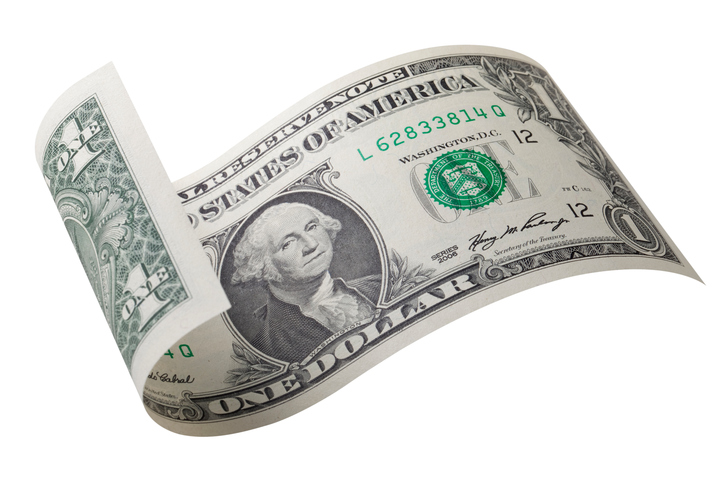Editor’s note: David Ensing is vice president, automotive research consulting at research and software firm MaritzCX, Toledo, Ohio. This is Part II of an edited version of a post that originally appeared here under the title, “Improving survey response rates through incentives.”
In Part I, I discussed ways to increase the benefits to consumers who participate in a survey. Part II will look specifically at monetary incentives.
In most circumstances, to increase response rates I recommend investigating the non-monetary methods listed in Part I before considering use of a monetary incentive (or any incentive with monetary value – e.g., a free oil change or a discount coupon for your next purchase). If not done properly, monetary incentives have the potential to bias the responses.
What makes an incentive appropriate?
Generally, the smaller the incentive the better. This is not only because smaller incentives are more economical, it is primarily because larger incentives have more potential to bias results. There are two main concerns with large incentives. First, as incentives increase respondents are more likely to complete the survey just to get the incentive. Therefore, they may pay little or no attention to the questions they are answering and provide bad information. Unfortunately, bad information is worse than no information at all. Second, larger incentives may bias the sample by encouraging lower income individuals to respond at greater rates than higher income individuals.
One thing to take into consideration when using a small monetary incentive is that it should be framed as a small token of appreciation to the customer. If customers believe you are trying to compensate them for their time with a small incentive, they can become offended.
 If possible, provide the incentive to everyone being sampled rather than promising an incentive to those who complete the survey. In the case of cash incentives to complete a mail survey, most research has shown that inclusion of a small amount (e.g., $1) is more effective at increasing response rates than promising a larger amount (e.g., $5) upon return of the survey. There are many potential reasons for this but probably the largest is customers’ skepticism that they will receive the promised reward.
If possible, provide the incentive to everyone being sampled rather than promising an incentive to those who complete the survey. In the case of cash incentives to complete a mail survey, most research has shown that inclusion of a small amount (e.g., $1) is more effective at increasing response rates than promising a larger amount (e.g., $5) upon return of the survey. There are many potential reasons for this but probably the largest is customers’ skepticism that they will receive the promised reward.
The incentive should be something of equal value to everyone, regardless of their experience. Incentives such as discount coupons for the next purchase or the promise of a free oil change have two major problems associated with them. First, they are more valuable to people who intend to return to the retailer (e.g., those that previously had a good experience) than those that are unlikely to return. Therefore, they can bias the results. Second, they can be seen by customers as another marketing ploy.
Finally, the incentive must match the methodology and the geography. Inclusion of a dollar bill with mail surveys is relatively easy in the U.S. but it is obviously difficult to do for online or phone surveys. It is also difficult to include money in Canadian mail surveys because smaller currencies are coins and the added weight of including them increases postal rates.
Common incentives
Inclusion of a dollar bill with a mail survey. Surprisingly, when using monetary incentives, this is still one of the most effective ways to increase response rates for mail surveys. This technique is particularly appropriate for small survey programs but can become financially infeasible for large programs.
Entry into a lottery to win a large prize upon return of the survey. For mail surveys, this technique is generally not as effective at increasing response rates as including a dollar bill with the outgoing survey. However, for large programs it is often more economically feasible. The use of a lottery is also easier to implement with online and telephone surveys. There are numerous laws and regulations concerning the use of lotteries as an incentive, and it is strongly recommended that a professional promotions management company be employed to manage the lottery.
Providing discount coupons. As discussed above, this is generally discouraged because of the potential to bias results and be seen as a marketing effort.
Contributing to charity in the customer’s name. In general, this technique is not as effective at increasing response rates as either the dollar bill or lottery alternatives. If considering this alternative, it is important to include several relatively different charities the customer can choose from. Otherwise, the potential to bias the sample will increase because those in favor of the charity’s cause might respond at higher rates.
Making the decision
The inclusion of a monetary incentive for customers to return experience surveys is not a decision that should be made lightly. It is fraught with potential problems. In general, non-monetary ways of improving representativeness, the number of surveys returned and response rates should be explored before considering incentives with monetary value. When considering monetary incentives, it is important to match the incentive to the size, methodology and geography of the program. I always recommend conducting a pilot test assessing the costs (both financial costs and results bias) and benefit (in terms of increased response rates) of several different types of monetary incentives.
